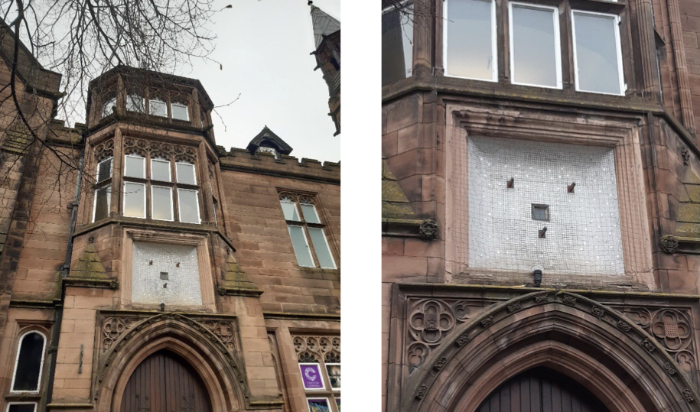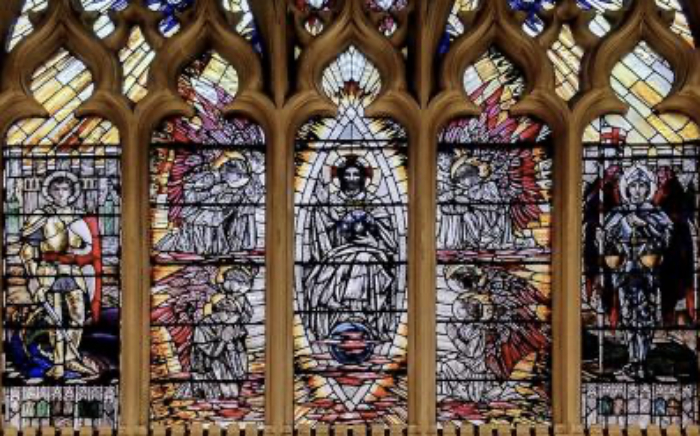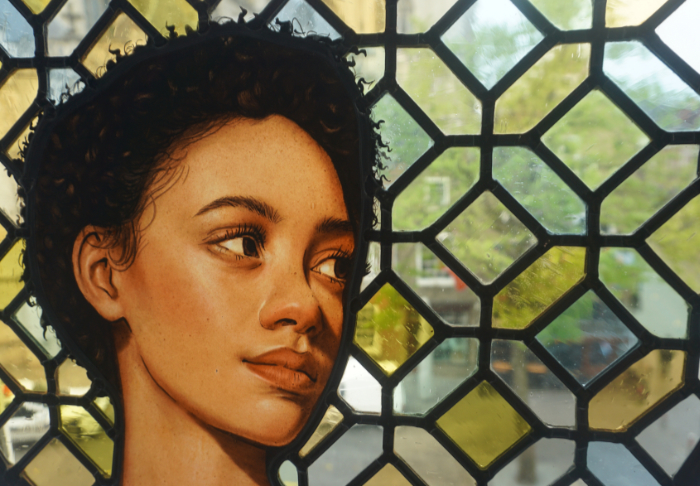
Free spirit
Dutch stained glass artist Ellen van Dijk is pushing the traditional boundaries of the medium and showing, through her finely detailed portraits, that old techniques have their place in contemporary settings. Linda Banks finds out more.
You have enjoyed drawing and painting portraits from a young age. What led you to start working with glass?
I knew since childhood that I wanted to pursue a creative career, though I was never quite sure what exactly. I started drawing and painting portraits when I was 11 or 12 years old. I enjoyed doing that a lot at first but, eventually, I lost interest, leading to a break from art. I guess I felt uninspired.
At 15, after earning my high school diploma, here in the Netherlands, I had to choose a college path. I ended up in a restorative and decorative painting programme, which seemed to make the most sense to me at the time. During this period, I stumbled upon stained glass, as my programme had a semester dedicated to it. I had always admired the beautifully painted church windows, but it hadn’t occurred to me that it could be a career until then. Something clicked for me after those classes.
Post-diploma, I enrolled in a part-time stained glass course in Antwerp, Belgium. The blend of craftsmanship and artistic expression made me feel inspired again. The whole process – from sketching to choosing glass, cutting, potentially incorporating painted elements, to leading, soldering and puttying – presented a challenge that I found, and still find, incredibly rewarding. It’s the ongoing puzzle of creating a stained glass window that keeps the excitement alive for me – it just never loses its charm.
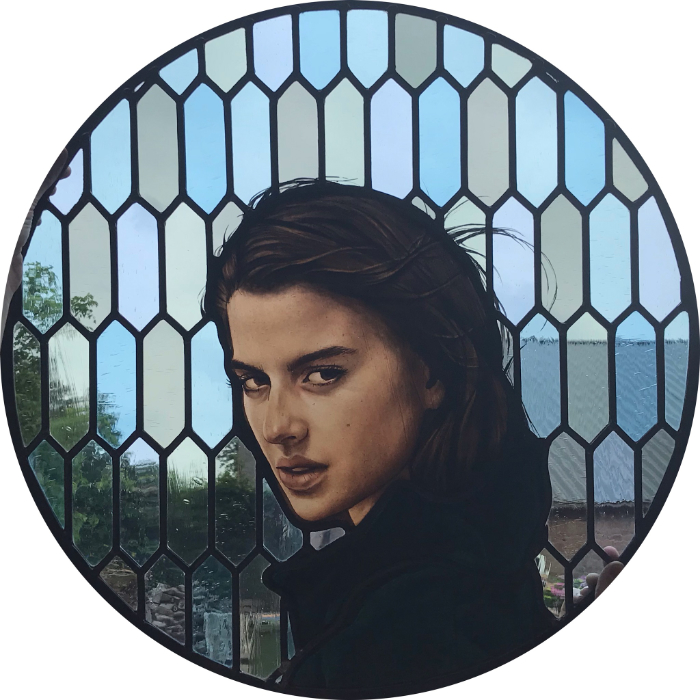
What glass techniques have you used and which do you prefer?
During my training in Belgium, I learned the basics of various stained glass techniques: leading, Tiffany, glass painting, fusing and a bit of restoration. After about two years, I went to work for one of the largest stained glass studios in the Netherlands, where the focus was mainly on restoring church windows. There, I delved into aspects like restoration ethics, bonding glass with UV light or two-component adhesive, and the cold retouching of painted glasswork.
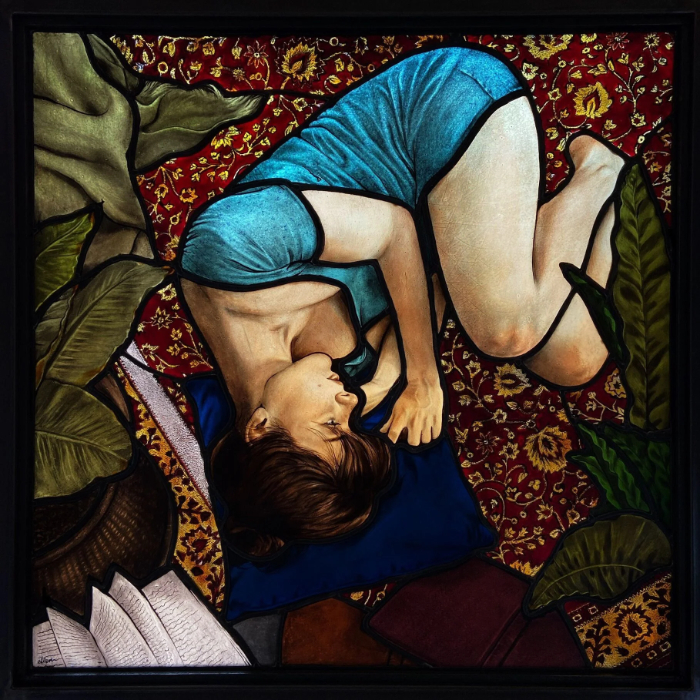
While I find the restoration of stained glass incredibly fascinating and educational, I’ve discovered that my true passion lies in creating my own work. This allows me to let my creativity run wild. All my work involves both extensive glass painting and leading. Sometimes, for smaller projects where lead would be too bulky, I use copper foil.
I’m eager to gain more experience in acid etching on glass, although I must admit it feels a bit intimidating to work with hydrofluoric acid. The results are always stunning though. Currently, when I want to etch something, I use a Dremel with a diamond bit, a technique I picked up from Judith Schaechter. It gives perfect results, but is also notably time-consuming, unfortunately – especially when dealing with larger areas that need grinding.

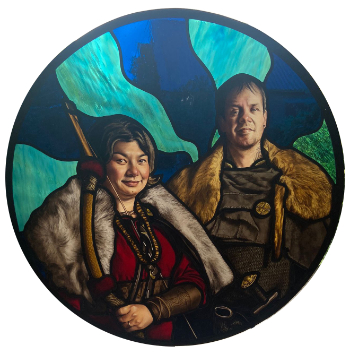
What is your creative approach? Do you draw your ideas out or dive straight in with the materials?
My creative process usually starts with a mental picture that I try to bring to life through photography, turning abstract ideas into something real. I often ask friends or family to pose for me. My ideas may be fuzzy initially, but they come to life during a photo session or a sketch. After that, I scale up the design and begin outlining the lead lines. I prefer using the computer program Glass Eye 2000, as it saves me a lot of time. When it comes to selecting glass, I try to use whatever I have in my inventory at that moment, even if it means thinking a bit outside the box. I try to spend as little time as possible on planning, although that approach can sometimes be a double-edged sword.
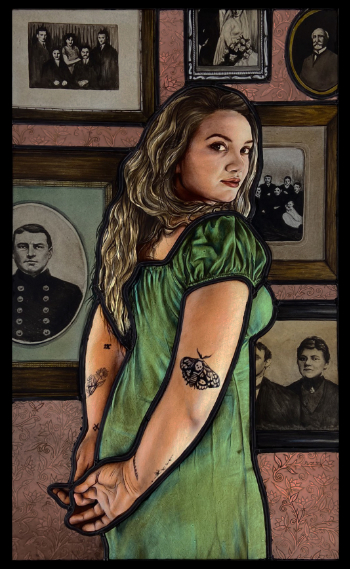
What message(s) do you want to convey through your art?
That’s always a tricky one for me. I guess it’s probably because I don’t think consciously about conveying a particular message; I usually just follow my intuition. But I do aspire to be more conscious about it eventually.
I’ve noticed that a lot of people, at least in my environment, still link stained glass primarily with religious contexts. And while there’s nothing wrong with that, I’d like to show people with my artwork that stained glass can absolutely fit into contemporary art as well.
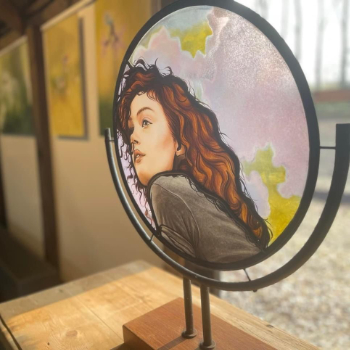
What is your favourite tool or piece of equipment and why?
I’ve built up quite a collection of specific tools that I can’t do without now, and I love discovering new, sometimes unconventional, tools to use in my work. For instance, Christina Alvner, a talented glass artist from Sweden, introduced me to working with porcupine quills, which work perfectly for scratching into dry paint. Recently, I’ve also started using tattoo needles, especially the shading ones, which are great for crosshatching. Another tool I couldn’t do without is my tracing brush; it’s from the Da Vinci 5519 series and it’s my absolute favourite. Or my painter’s bridge, which was custom-made by my father.
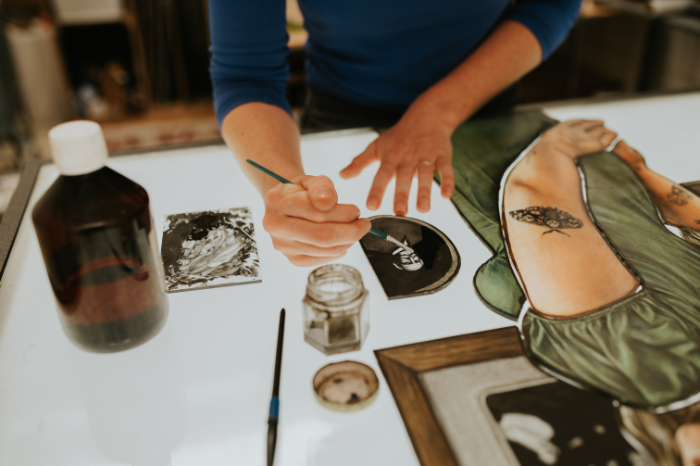
Do you have a favourite piece you have made? Why is it your favourite?
My favourite piece is probably the one I’m currently working on, which is the one with the girl laying on her bed with a dog and a cat. I’ve been wanting to collaborate with a friend of mine as a model for a while. Impulsively, we chose a moment for a photo session without me having a clear idea of what I wanted. I was not even using a proper camera but just my iPhone camera, but after a couple of minutes of shooting the perfect image emerged naturally. I think it’s my favourite because it came about so spontaneously, making the piece feel personal and a little intimate.
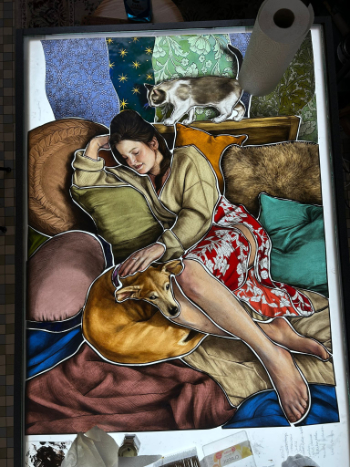
What advice would you give to someone starting out on a creative career?
It’s a huge cliché, but I do believe that the most crucial thing is to follow your own voice and passion. Both of these things will shine through in the work you create, giving it an authentic quality.
Also, when starting a creative career, you’ll undoubtedly receive a lot of well-intentioned (and perhaps sometimes unsolicited) advice from those around you. Navigating your way around that can be a bit daunting at times. Try not to let it throw you off balance and do whatever feels right for you.
And lastly, try to make the most of social media platforms like Instagram. Regularly updating your feed can feel like a bit of a chore sometimes but, ultimately, it does provide so many good connections and opens a lot of new doors!

Where is your practice heading next?
Currently, I primarily teach stained glass painting workshops and work on commissioned pieces on the side. What I really appreciate about teaching is that it keeps you on your toes, constantly learning new things and building connections with other passionate glass artists. However, eventually I would like to transition towards being able to focus more on creating commissioned works, whether it be for individuals or for stained glass studios looking to outsource their painting work.
I enjoy expressing myself through creating personal artworks. It’s wonderful not having to consider anyone else’s preferences and making something purely based on my own intuition and feelings. When the time comes, I would love to explore possibilities for collaborations with art galleries, although I currently find it challenging because I feel that stained glass art doesn’t yet have the spotlight it deserves in the world of contemporary art.
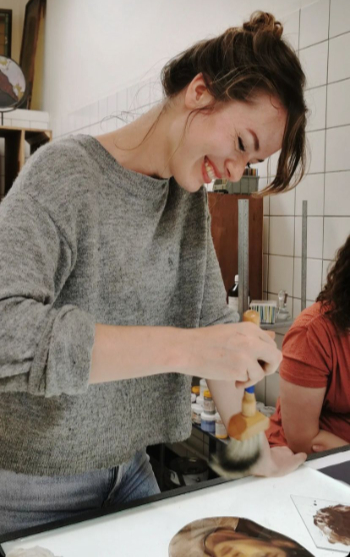
Find out more about Ellen and her work via her website and social media:
www.instagram.com/glasatelierellen
www.facebook.com/glasatelierellen
https://en.glasatelierellen.com
Main feature image: ‘Golden Hour’, created by Ellen van Dijk in 2021.
